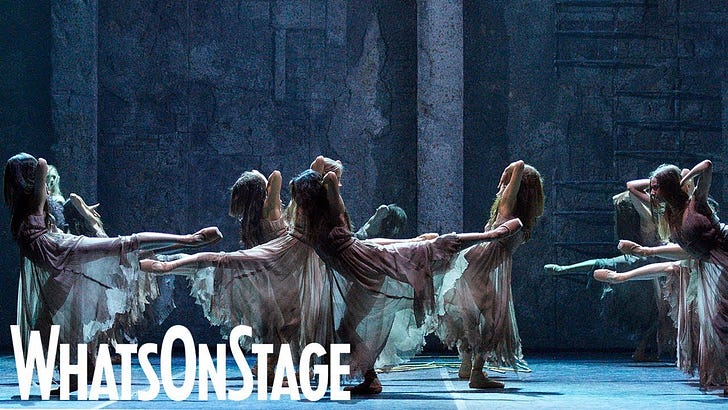Shorter than Swan Lake, cheaper to stage than The Sleeping Beauty, Giselle has long served as a treasured staple of the ballet repertory. Widely considered a crucial test of technical subtlety and dramatic nuance, its leading role has become as important to a dancer as Hamlet is to an actor.
Choreographed by Jean Coralli and Jules Perrot and first performed in Paris in 1841, the ballet reflects many elements of the era’s blossoming Romantic movement. Peasant women were regularly depicted as betrayed by noblemen, mad scenes littered plays and operas, and Giselle’s love of dancing places her among the passionate artists whose devotion to art detached them from reality.
For about 150 years, the ballet’s narrative and its emotional expression were enough to satisfy the public, with revered artists such as Galina Ulanova, Carla Fracci and Natalia Makarova giving legendary performances in the title role.
You don’t hear much about individual performances now—you hear about new productions. Matthew Bourne’s “all-male” Swan Lake made the audience think again about the best-known classics. Mark Morris flipped The Nutcracker, hilariously, into suburban America in the swinging 1970s; Morgann Runacre-Temple and Jessica Wright updated the clockwork mechanisms in Coppélia.
The fresh ideas that blew through these familiar pieces gave them a new lease on life, especially for anyone who didn’t know or care about their history. So when Akram Khan reimagined Giselle for English National Ballet eight years ago, viewers were primed for innovation. And that’s what they got.
Having previously worked only in modern dance and classical Indian kathak without ever crafting a full-evening piece, Khan merely hints at the original Giselle. The story is gone and the characters barely defined. What remains is his extraordinary skill with structural design and gripping atmosphere.
He starts with a crowd pushing against a wall splattered with handprints; drably dressed, the interchangeable bodies have nowhere to go. An ominous sense of doom presses against their massed movement—The Rite of Spring flashed through my mind—yet a single couple manages to break away for a gentle duet.
With the sound of a hunting horn, mournful as a foghorn, the wall pivots horizontally and a stately retinue advances from the darkness, projecting both grandeur and authority. It’s been said that the crowd, rustic villagers for Coralli, here consists of migrant workers, camping beneath the walls of a disused factory owned by Albrecht, Giselle’s deceptive suitor, who pretends to be one of them. The elegant group represents the power, the bosses, which would explain why one man urges Giselle to bow for her own good.
Plausible? These conceits suit the narrative comfortably, but I couldn’t identify them on the stage. The male ensemble exploded into action briefly, belligerently, and the women joined them, shaping crowns over their heads with their hands. The group leader and the lying intruder fought, and Giselle collapsed to the ground.
Even more abstract and more fascinating, Act II occupied the elusive territory where life and death collide. The Wilis, or whoever those terrifying maidens are, hover on pointe like an inescapable threat. Giselle hovers too, nearly immobile with astonishment or fear, before vanishing into their ranks and then reemerging to confront the man who let her down.
First she becomes the most convincing disembodied spirit I’ve ever seen; then suddenly she’s as physically weighty and thoroughly dead as Juliet in the tomb. And then she’s on her feet again—woman? ghost? lost ideal?—and you can’t tell where you are, either with the underlying source or with Khan’s interpretation.
“I didn’t know the story,” a friend told me, “so I just went with the flow, and it blew me away.” Forget whatever you expected. This Giselle qualifies as a courageous experiment—by Kahn with ballet and by the company with a new view of old material—that, possibly against all odds, pays off handsomely for everyone.
English National Ballet will take Mary Skeaping’s traditional version of Giselle on a national tour, October 23 to January 18, 2025. See ballet.org.uk
National and international movie theatres will screen Derek Deane’s Swan Lake in-the-round, October 30 to November 3. ENBSwanLakeCinema.com

